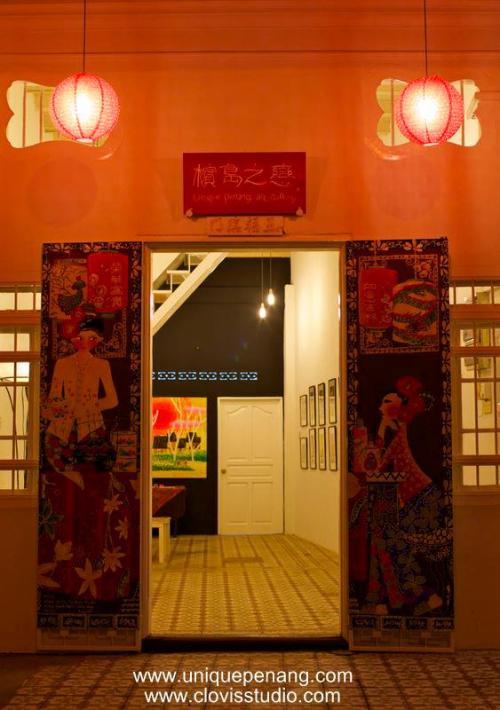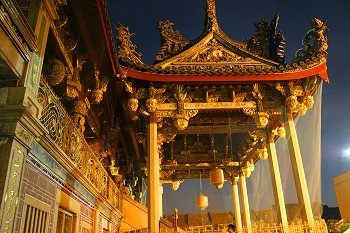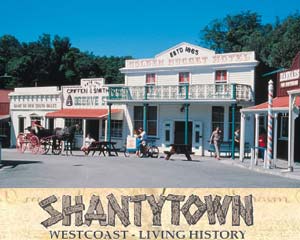I went to Georgetown for the second time this year. I did a warm up sketch in the ferry and a little old lady asked to see my sketches. She then started talking about how crime rate was high these days and depicted a robbery story she heard from someone she knew. She reminded me of an old man in KL, who reminded me to hide my wallet in my bag.
 |
| ferry |
When I reached the terminal, Kiah Kien was already waiting there. He brought me to a printing shop and I saw some really nice paintings on the wall. One of them inspired me to try out a new watercolour style. He then left me to go back to his parents' house. I walked along Church Street and settled down at the junction of Church st and King st to draw a Chinese association and the temple beside it.
 |
| Guangdong Chinese Association |
As I was starting to paint, Kiah Kien joined me and produced a vertical sketch of the building I was sitting in front of. Some of the passersby stopped and looked at us sketch. One of them was an amateur photographer who spent 2 weeks photographing a street, which I forgot the name.
We were then joined by Cheang Jing, another painter friend and had some local food. Cheang Jin did a quick sketch at the hawker stall.
I then continued sketching and found a nice spot at Armenian street. I lingered for quite a while before settling down, trying to decide between sketching yet another temple and a row of old buildings. The later won. Just as I started sketching, a man walked up to me and started commenting:
''Why are you using pen instead of pencil ar? Use pencil ma, can correct mistake.''
''Why your leaves so round ar? Dun bluff la. The leaves are pointed.''
To my horror, he then insisted upon showing me his pencil colour drawings and said he'd tear up the ones that I didn't like. What a weird guy.
Anyway, I got rid of him by saying I needed time to sketch and he could show me his drawings later. Fuh, peace at last.
 |
| Armenian street |
I then walked to Love Lane and had a pleasant discovery, a new art gallery exhibiting cheerful and colourful paintings by artist Joey Lim and her students. I saw a nice all white table with some wooden coloured pencils and was tempted to draw something so I did!
Then I spent my evening visiting 2 art exhibitions at Straits Quay and A2( nice food!)
On the second day, I woke up to heavy downpour and was worried that the sketching session organized by penang sketchers group'd be cancelled. Luckily it's not and I sketched something simple.
 |
| Campbell street market |
 |
All of us!

After lunch, I continued sketching and was joined by Marni half way through. We sketched on Love Lane. |
 |
Love Lane 爱情巷
Then we moved to Muntri Street. A man saw us and walked across the street from Muntri Mews and chatted with us( actually I kind of ignored him cuz I wanted to save time to sketch so Marni was the one answering his questions). Then Kiah Kien arrived to fetch us and the man's friend was holding Kiah Kieh's book - 素描老槟城 Sketches of Pulo Pinang and he shouted,'' Hey this is the man lah! '' and took a photo with Kiah Kien. |
 |
| Muntri Mews, Muntri Street |

We then attended a mid autumn gathering at a very unique art gallery. By that time I was quite exhausted. But upon reaching my Penang host, WanLu and Yong Qing's house, wanlu and I talked til 2.40am. yak yak yak....
On the third day, I did a sketch and met with Kuan Yew. |
 |
Carnavon Street, sketched in front of Penang Heritage Inc. building
|

Lebuh Carvanon
 |
| Kuan Yew and me |
We had homemade cake and vanilla ice cream at Moontree 47. Delicious!
I really do love Georgetown. I wish I could work there. I hope that Kuan Yew'd one day fall in love with Georgetown as I have. |


































































